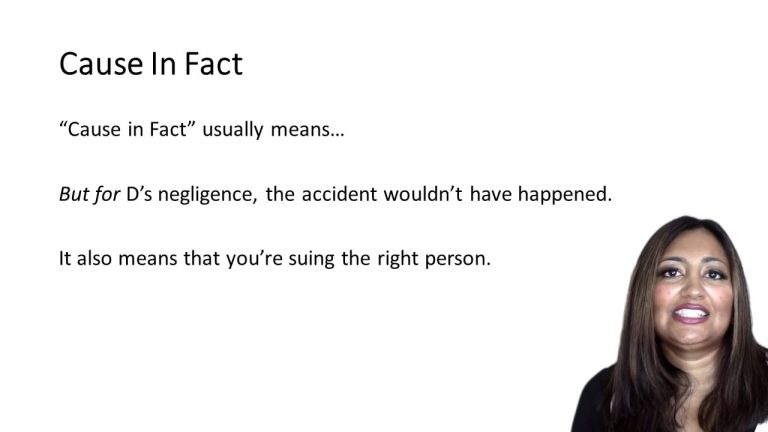SmartBrief
Confirm favorite deletion?
Torts Keyed to Twerski
Herskovits v. Group Health Cooperative of Puget Sound
Citation:
664 P.2d 474 (Wash. 1983)Facts
Herskovits visited Group Health Cooperative of Puget Sound (Defendant) complaining of chest pain and coughing and was treated with cough medicine. He was later diagnosed by another physician with an advanced form of lung cancer, and passed away twenty months later. Herskovits’s wife and estate (Plaintiff) sued Defendant for negligently failing to diagnose Herskovits. At trial, the Plaintiff’s expert testified that Herskovits chance of survival decreased from 39 percent to 25 percent because of Defendant’s failure to diagnose, demonstrating actual cause. Defendant moved for summary judgment, arguing that the evidence did not sufficiently support the claim that their failure to diagnose more likely than not caused Herskovits death.
Only StudyBuddy Pro offers the complete Case Brief Anatomy*
Access the most important case brief elements for optimal case understanding.
*Case Brief Anatomy includes: Brief Prologue, Complete Case Brief, Brief Epilogue
- The Brief Prologue provides necessary case brief introductory information and includes:
Topic:
Identifies the topic of law and where this case fits within your course outline.Parties:
Identifies the cast of characters involved in the case.Procedural Posture & History:
Shares the case history with how lower courts have ruled on the matter.Case Key Terms, Acts, Doctrines, etc.:
A case specific Legal Term Dictionary.Case Doctrines, Acts, Statutes, Amendments and Treatises:
Identifies and Defines Legal Authority used in this case.
- The Case Brief is the complete case summarized and authored in the traditional Law School I.R.A.C. format. The Pro case brief includes:
Brief Facts:
A Synopsis of the Facts of the case.Rule of Law:
Identifies the Legal Principle the Court used in deciding the case.Facts:
What are the factual circumstances that gave rise to the civil or criminal case? What is the relationship of the Parties that are involved in the case.Issue(s):
Lists the Questions of Law that are raised by the Facts of the case.Holding:
Shares the Court's answer to the legal questions raised in the issue.Concurring / Dissenting Opinions:
Includes valuable concurring or dissenting opinions and their key points.Reasoning and Analysis:
Identifies the chain of argument(s) which led the judges to rule as they did.
- The Brief Prologue closes the case brief with important forward-looking discussion and includes:
Policy:
Identifies the Policy if any that has been established by the case.Court Direction:
Shares where the Court went from here for this case.

 8m 27s
8m 27s